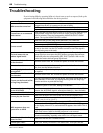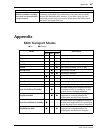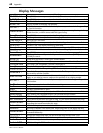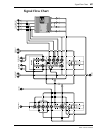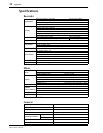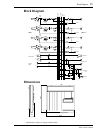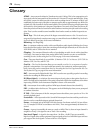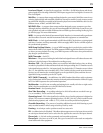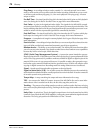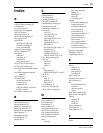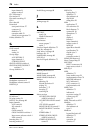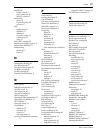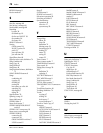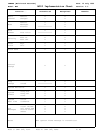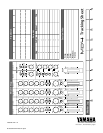
73
MD4—Owner’s Manual
Low-Level Signal—A signal in the range from –100 dB to –20 dB. Microphone and electric
guitar signals are in this range. MD4 MIC/LINE inputs support low-level signals. Contrast with
Line-Level Signal.
MiniDisc—A compact data storage medium designed to store music. MiniDiscs come in two
varieties: playback only and recordable. MiniDiscs can only be used for 2-track or mono record-
ing with MD4. MiniDiscs recorded on MD4 can be played on a normal MiniDisc deck. See also
Random Access, ATRAC, and MD DATA Disc.
MD DATA Disc—A compact data storage medium designed to store computer-type data.
Although similar to MiniDiscs, they are not interchangeable. MD DATA discs come in two vari-
eties: playback only and rewritable. MD4 uses the rewritable type for recording. See Buying Discs
for MD4 on page 2 for more information.
MIDI—An acronym for Musical Instrument Digital Interface. An internationally agreed stan-
dard that allows electronic musical instruments and audio equipment to communicate.
MIDI Clock—A clock signal transmitted as MIDI data. MIDI Clock refers to a timing signal
and Start, Continue, and Stop commands. MD4 can supply MIDI Clock to a MIDI sequencer
for synchronized operation.
MIDI Song Position Pointer—A type of MIDI message that is used to derive position infor-
mation from a MIDI Clock signal. The MD4 generates MIDI Song Position Pointers. So no mat-
ter where you start playback in a song, your MIDI sequencer will locate to that point and then
play along in synchronization.
MIDI Timecode—See MTC.
Mixdown—The process of mixing the individual track signals into a well-balanced stereo mix.
Mixdown is the final stage of the multitrack recording process.
Monitor CUE—The cue monitor allows you to monitor individual tracks as they are being
recorded or played back. In Record Pause mode and during recording, the CUE monitor source
is the signal being recorded (i.e., the input signal). For playback the CUE monitor source is from
disc (i.e., the signal that was recorded to disc). This is useful with the punch in/out functions,
because you can monitor the recorded signal up to the specified IN point, and then the new
signal that’s being recorded up to the OUT point.
MTC (MIDI Timecode)—An addition to the MIDI Standard that allows audio equipment
to be synchronized. MIDI Timecode contains clock and position information. MD4 can supply
MTC to a MIDI sequencer for synchronized operation.
Multitracker—An all-in-one recording and mixing device usually with four or eight tracks.
MD4 is the first multitracker to use the MD DATA disc format.
Nominal Level—See Operating Level.
One-Take Recording—A recording technique in which all sounds are recorded in one go
(i.e., no overdubs). This is used for live recording.
Operating Level—This is the signal level at which a piece of audio equipment is designed to
operate. The two most common operating levels are –10 dBV (316 mV), which is used for semi-
professional equipment, and +4 dBu (1.23 V), which is used for professional equipment.
Overdub Recording—The process of recording additional sounds while listening to previ-
ously recorded sounds. It allows songs to built up track-by-track.
Panning—A technique used to position sounds in a stereo mix.
PB—An abbreviation for Playback. This abbreviation appears next to the input selector switch
on each input channel and is used to select the disc signal as the source for the input channel.
Phone Jack—A 1/4-inch socket commonly used on audio equipment.
Phono Jack—Also know as an RCA jack, this type of connector is often used on semiprofes-
sional audio and video equipment.




